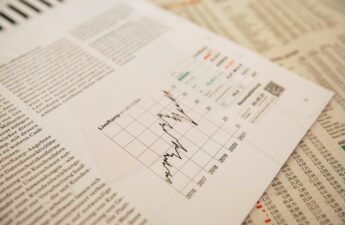Contents
- 1 Unraveling the Mystique of the Active Market
- 2 Definition: What Does “Active Market” Mean in the Financial Ecosystem?
- 3 The Framework of an Active Market
- 4 Market Mechanics: Understanding Supply and Demand Forces
- 5 The Role of Information: How Knowledge Fuels Market Activity
- 6 Strategies in Active Market Participation
Unraveling the Mystique of the Active Market
Mystique of the Active Market In the fast-paced world of finance, the term “Active Market” has become increasingly significant. Investors, traders, and financial institutions around the globe are constantly striving to decipher its intricacies and harness its potential. In this comprehensive guide, we will delve into the heart of the matter, exploring the definition, historical context, key components, market mechanics, and the future of active markets. By the end of this article, you’ll have a firm grasp of what it takes to navigate and thrive in this dynamic financial ecosystem.
Definition: What Does “Active Market” Mean in the Financial Ecosystem?
An active market, often referred to as a liquid market, is a financial marketplace characterized by a high level of trading activity. In such markets, buying and selling of financial instruments occur frequently and efficiently. This leads to price transparency, tighter bid-ask spreads, and increased liquidity, making it an attractive playground for investors and traders alike.
Historical Context: The Evolution of Active Markets
To understand the significance of active markets, we must trace their evolution through history. From the bustling bazaars of ancient civilizations to the modern stock exchanges and cryptocurrency markets of today, the concept of active trading has a rich and diverse history.
The Framework of an Active Market
Core Components: What Constitutes an Active Market?
a. Key Players: Who Dominates the Active Markets?
Active markets are driven by a myriad of participants, each with a unique role to play. These players include retail investors, institutional investors, market makers, and high-frequency traders. Understanding their motivations and strategies is crucial to navigating the complexities of the market.
b. Instruments and Assets: What’s Being Traded?
In an active market, a wide array of financial instruments and assets change hands. This can encompass stocks, bonds, commodities, currencies, derivatives, and even digital assets like cryptocurrencies. The diversity of these offerings contributes to the market’s vibrancy.
Market Mechanics: Understanding Supply and Demand Forces
At the heart of every active market lies the fundamental principle of supply and demand. Prices fluctuate as buyers and sellers interact, reflecting changing perceptions of asset value. Traders must keep a keen eye on these dynamics to make informed decisions.
The Role of Information: How Knowledge Fuels Market Activity
In today’s digital age, access to information is paramount. Investors and traders rely on real-time news, research reports, and market analysis to make decisions. The rapid dissemination of information can lead to sharp market movements, creating opportunities and challenges in equal measure.
Strategies in Active Market Participation
Navigating active markets requires a strategic approach. Here, we explore various strategies employed by market participants to maximize their gains and minimize risks.
Active Trading: Techniques and Management
a. Day Trading: Profiting from Short-term Price Movements
Day traders aim to capitalize on small price fluctuations within a single trading day. This strategy demands quick decision-making, technical analysis prowess, and risk management skills.
b. Swing Trading: Capitalizing on Market Volatility
Swing traders seek to profit from price swings that occur over several days or weeks. They rely on technical and fundamental analysis to identify potential entry and exit points.
Fundamental Analysis: Evaluating Market Value
Fundamental analysts assess the intrinsic value of assets by analyzing financial statements, economic indicators, and industry trends. This approach helps investors make long-term investment decisions.
Technical Analysis: Predicting Price Patterns
Technical analysts study price charts and patterns to predict future price movements. This method is invaluable for short-term traders seeking to time their entries and exits.
Sentiment Analysis: Gauging Market Psychology
Sentiment analysis involves assessing market sentiment and investor psychology. It helps traders gauge market sentiment and anticipate potential market reversals.
Risk Management: Protecting Investment through Diversification
Risk management is the cornerstone of successful trading. Diversifying one’s portfolio, setting stop-loss orders, and managing leverage are crucial aspects of mitigating risks in active markets.


